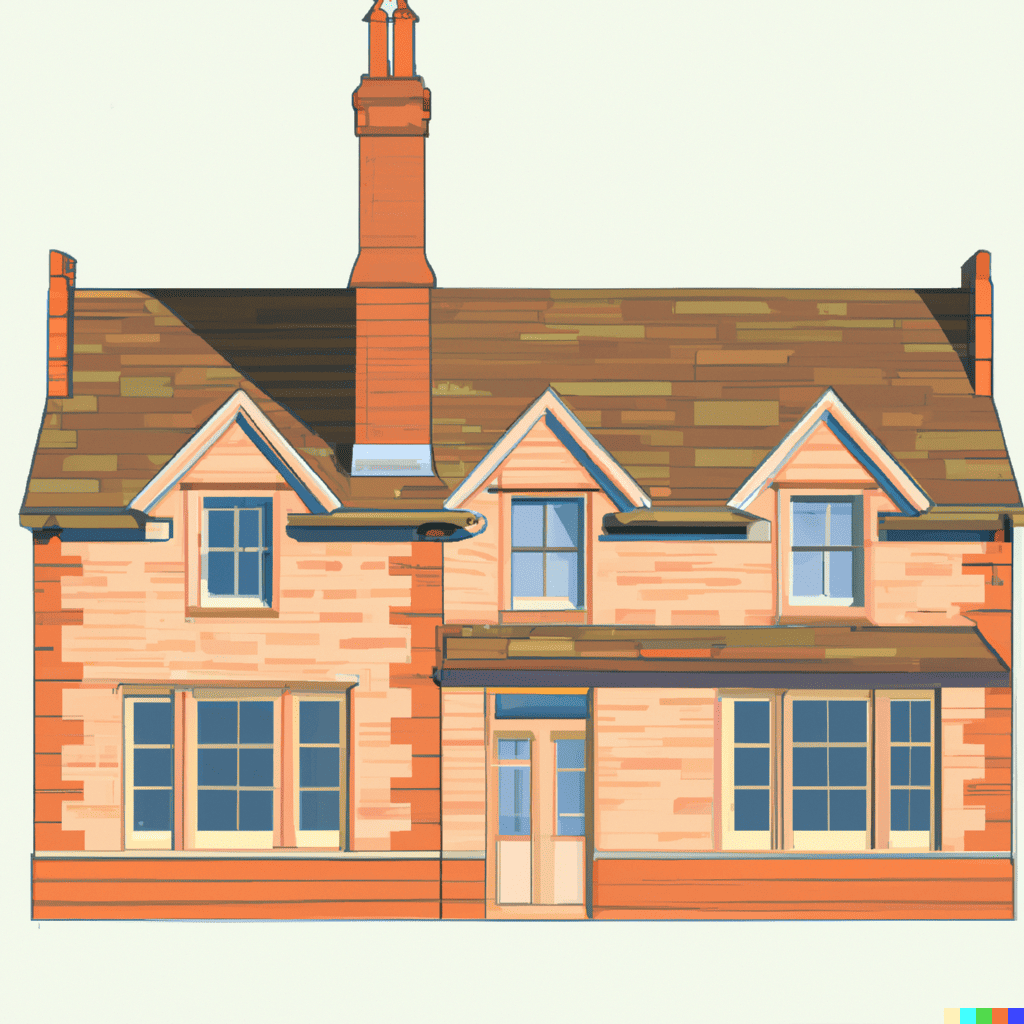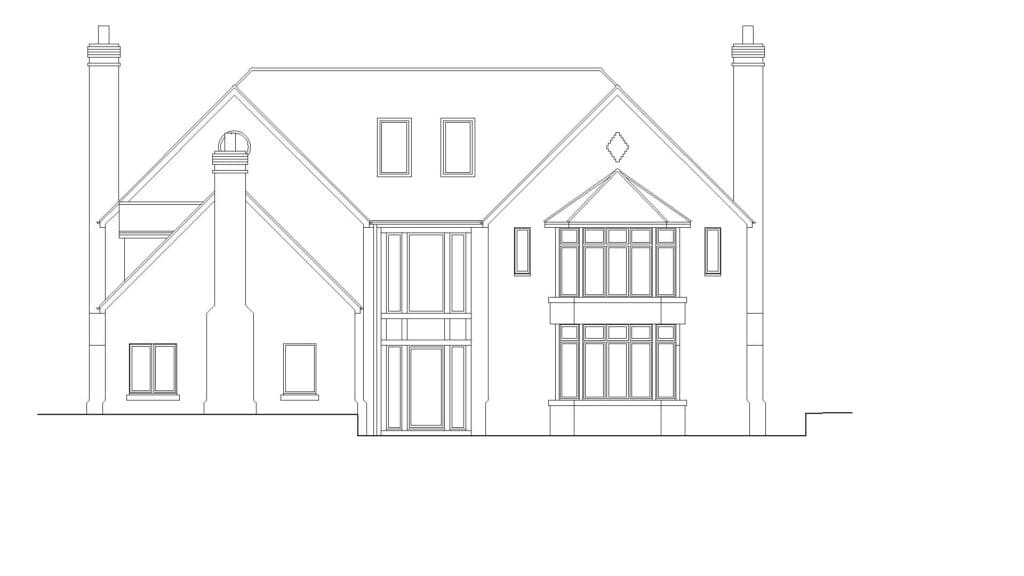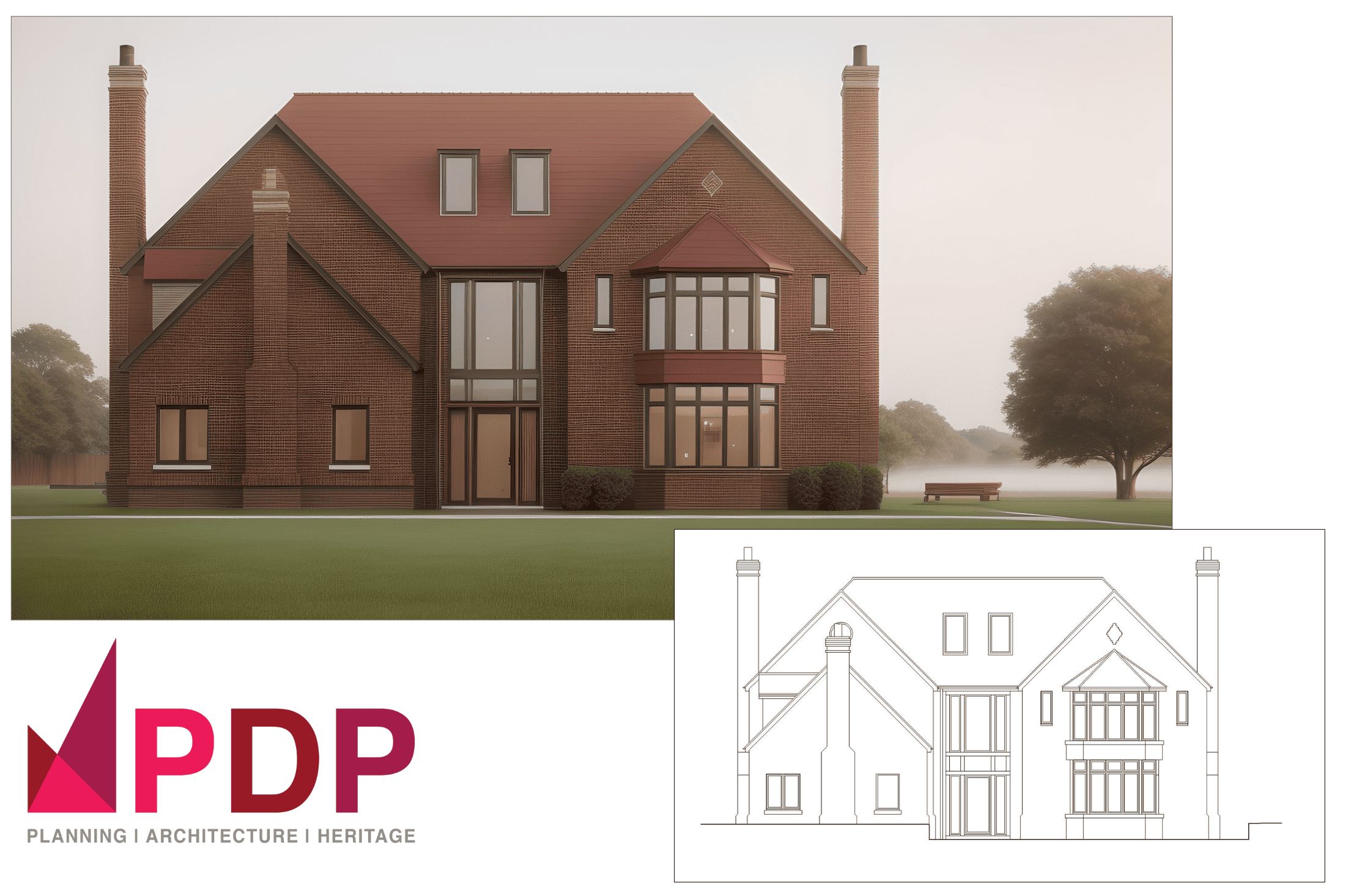Artificial Intelligence (AI) has the potential to seamlessly integrate itself into architecture, reshaping how designers, architects, and planners conceive and craft spaces. In our multidisciplinary design firm, we’ve embarked on an exploration of AI’s diverse influence within our field, delving into various AI-driven tools and methodologies to see if we can harness these for the benefit of our clients.
In the realm of text generation, AI tools like ChatGPT have shown promise, aiding in drafting articles and generating written content (including this very post!). However, when it comes to image generation for design work, tools like DALL E stand out as interesting resources. DALL E enables users to generate diverse and unique images with text-based prompts. We see these tools as being somewhat helpful to generate ideas and precedent images at the start of the design process, but there is definitely not enough control and detail to aid specific design work.

AI-powered rendering software such as Veras offer more control by basing image generation on basic 3D models. Vera is a plug-in for SketchUp that can use simple base models to create varied fully detailed renders. Yet, despite the theoretical advantages, unexpected artifacts and complexities necessitate meticulous corrections, which can slow down the process.
We have had the most success so far with tools like Vizcom.ai. Vizcom can convert simple line sketches into striking visuals. Additionally, AI tools integrated into Adobe’s suite, such as generative fill in Photoshop, offer potential in improving our workflows. However, our key focus is always to create consistent and repeatable images that achieve the design intent we are looking for, which isn’t always possible with these tools.

Figure 2 – Vizcom ai visual created from line drawing. Before and after, prompt; “rural house red brick”
Nevertheless, our core visual creation process remains rooted in established methods involving 2D and 3D CAD software such as SketchUp and Revit, coupled with rendering software like Enscape. These tools provide us with precise control over generating early-stage conceptual visuals or intricate final renderings, aligning closely with our meticulous design approach.
Another intriguing aspect of AI’s influence in architecture is generative design. We’ve explored tools like Dynamo for Revit, utilizing parameters to generate test options and forms. Autodesk’s Forma software has extended this capability, enabling the assessment of multiple iterations of site form and massing, particularly beneficial in the master planning phase for larger-scale development projects.
In our pursuit of innovation, we have a commitment to staying updated on technological advancements, continuously experimenting with AI-driven tools. However, while AI presents immense potential in reshaping architectural workflows, our approach remains grounded in time-tested practices.
As the possibilities for AI in architecture continue to expand, we’re eager to harness these advancements to further elevate our ability to craft high quality spaces. We are on the lookout for bold and ambitious clients eager to test these tools and software for their projects, collaborating to explore the possibilities and push the boundaries of what’s achievable in architecture.
David Symons, Senior Architect, Planning & Design Practice Ltd
AI in Architecture: References:
- ChatGPT: OpenAI’s ChatGPT
- DALL E: OpenAI’s DALL E
- Vizcom.ai: Vizcom.ai
- SketchUp: SketchUp
- Revit: Autodesk Revit
- Enscape: Enscape Rendering Software
- Dynamo for Revit: Dynamo for Revit
- Autodesk Forma: Autodesk Forma
Our approachable and experienced team comprises architects, architectural assistants, designers and technicians. Our architects have true international expertise having worked on large scale projects in Russia, Germany, Spain, Canada and the United States as well as across the UK. We offer a comprehensive design service through all the RIBA work stages from concept through to completion.
Planning & Design Practice believe in good architecture, to improve our quality of life, create real value and to drive sustainable development, creating robust, resilient homes and buildings to face the challenges of climate change. For a no obligation consultation to discuss your project or property, please get in touch on 01332 347371 or enquiries@planningdesign.co.uk




